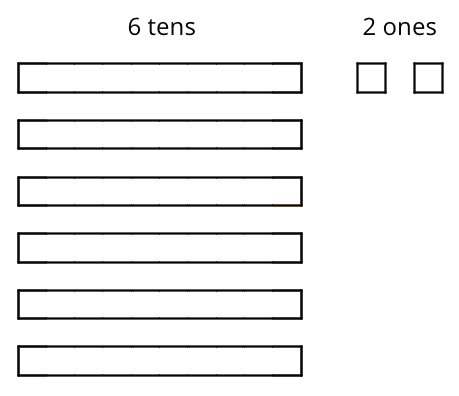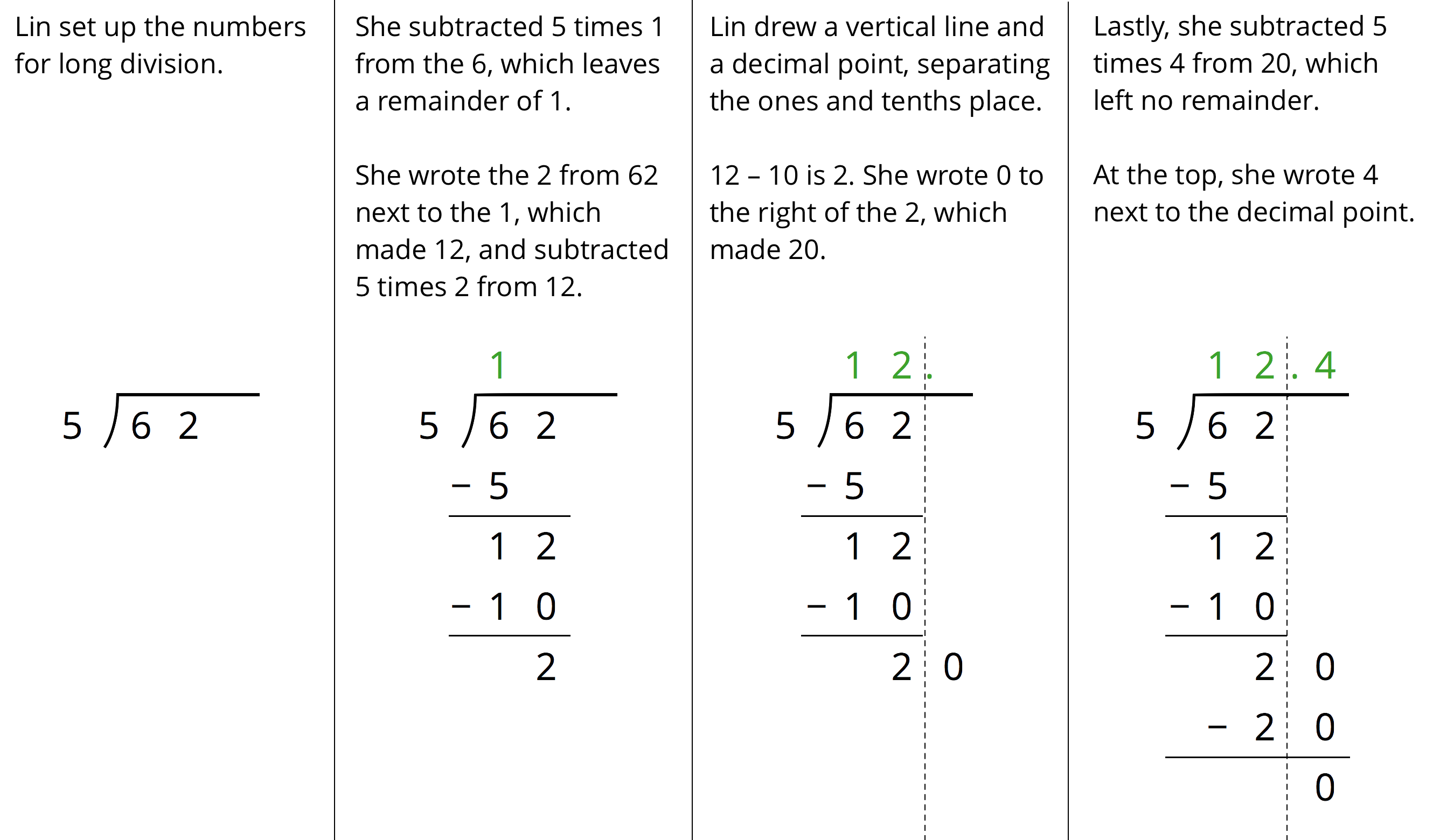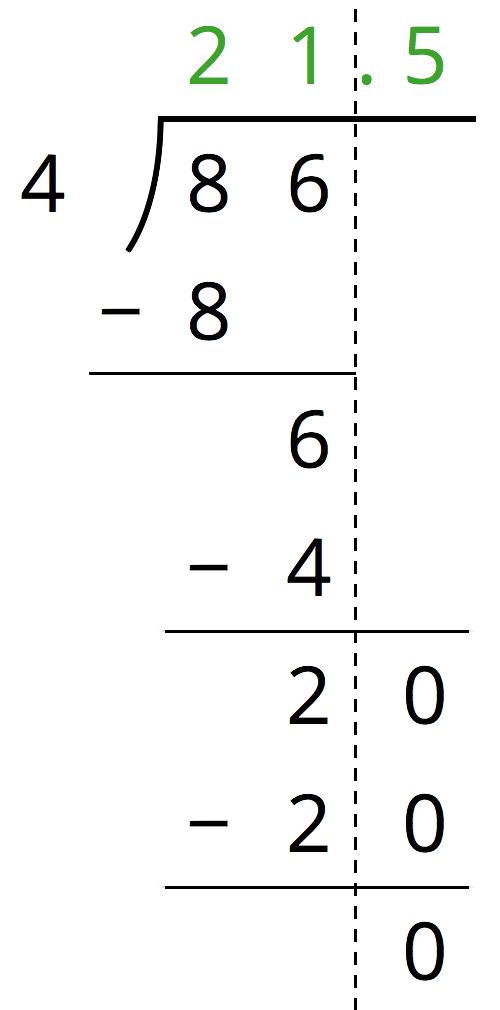11.1: Number Talk: Evaluating Quotients
Find the quotients mentally.
$400\div8$
$80\div8$
$16\div8$
$496\div8$
Let’s find quotients that are not whole numbers.
Find the quotients mentally.
$400\div8$
$80\div8$
$16\div8$
$496\div8$
Here is how Mai used base-ten diagrams to calculate $62 \div 5$.

She started by representing 62.
She then made 5 groups, each with 1 ten. There was 1 ten left. She unbundled it into 10 ones and distributed the ones across the 5 groups.
Here is her diagram for $62 \div 5$.

Discuss these questions with a partner and write down your answers:
Here is how Lin calculated $62 \div 5$.

Discuss with your partner:
Lin put a 0 after the remainder of 2. Why? Why does this 0 not change the value of the quotient?
Lin subtracted 5 groups of 4 from 20. What value does the 4 in the quotient represent?
What value did Lin find for $62 \div 5$?
Use long division to find the value of each expression. Then pause so your teacher can review your work.
Use long division to show that:
Noah said we cannot use long division to calculate $10 \div 3$ because there will always be a remainder.
Dividing a whole number by another whole number does not always produce a whole-number quotient. Let’s look at $86 \div 4$, which we can think of as dividing 86 into 4 equal groups.

We can see in the base-ten diagram that there are 4 groups of 21 in 86 with 2 ones left over. To find the quotient, we need to distribute the 2 ones into the 4 groups. To do this, we can unbundle or decompose the 2 ones into 20 tenths, which enables us to put 5 tenths in each group.
Once the 20 tenths are distributed, each group will have 2 tens, 1 one, and 5 tenths, so $86 \div 4 = 21.5$.

We can also calculate $86 \div 4$ using long division.
The calculation shows that, after removing 4 groups of 21, there are 2 ones remaining. We can continue dividing by writing a 0 to the right of the 2 and thinking of that remainder as 20 tenths, which can then be divided into 4 groups.
To show that the quotient we are working with now is in the tenth place, we put a decimal point to the right of the 1 (which is in the ones place) at the top. It may also be helpful to draw a vertical line to separate the ones and the tenths.
There are 4 groups of 5 tenths in 20 tenths, so we write 5 in the tenths place at the top. The calculation likewise shows $86 \div 4 = 21.5$.